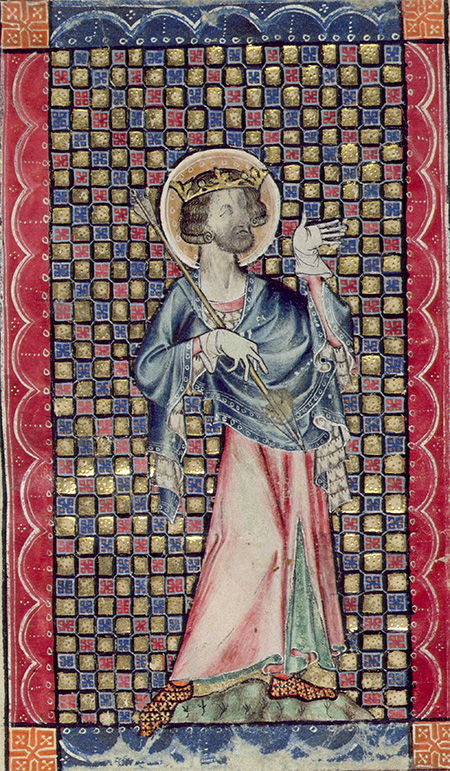The First Public Historian
The idea of public history, in which academics seek to address a wider audience, is considered to be a modern one, but, discovers Eleanor Parker, a form of it was practised during the Middle Ages.

Did public history exist in the Middle Ages? Since the term itself is relatively modern, the immediate answer to this question would seem to be no. Nonetheless, there were many diverse forms in which medieval audiences could encounter stories about history and we might discover some parallels in the various ways educated historians communicated information about the past.
One of the most common means must have been through public preaching about the deeds of the saints. The primary aim of preaching is not to teach history, of course, but in some cases it can hardly be avoided: it is often necessary to understand the historical context in which a particular saint lived in order to understand their deeds and their claim to sanctity. To encourage popular devotion to their saints, medieval preachers had to find ways to explain this context to audiences who might know very little about it.
We can get some sense of how such interactions might go from occasional references in hagiographical texts of sermons preached by monks and clerics about the saints of the past. One memorable example concerns a monk of Bury St Edmunds named Herman, a learned man and a trained historian. In the last decades of the 11th century Herman wrote a long and historically informed account of the miracles of St Edmund, in which he traces the relationship between the saint’s cult and the chief events of English history over the 10th and 11th centuries.
Herman was also an experienced preacher and in a contemporary text we hear of him preaching at Pentecost about St Edmund to a congregation in the abbey church, probably in 1097. The crowd who listened to him preach were lucky: they were hearing from an expert on St Edmund, who must have had plenty to say about the saint. While Herman’s erudite written works were intended for a Latinate audience within the monastery of Bury St Edmunds, in his preaching he obviously found a way of mediating this material to the crowd in English. To underline his sermon on this occasion, we are told, he displayed to the congregation the martyr’s garments and the casket in which the saint’s relics were kept. These would have been dramatic visual aids for the preacher, since Edmund’s clothes were still stained with blood and pierced with the holes left by Viking arrows.
It would be interesting to know what Herman said about these relics as he displayed them to the crowd. Did he tell the story of Edmund’s death in 869, explaining how the king was martyred when the Danes invaded East Anglia under Ivar and Ubbe, sons of Ragnar Lothbrok? Perhaps he told how Edmund’s vengeful ghost had caused the death of Svein Forkbeard in 1014, a story first found in Herman’s writing. Herman’s work on the history of Edmund’s miracles aimed to show God’s power at work through time, but it is rooted in the complexities of pre-Conquest English politics; it would be difficult to talk about Edmund without explaining something about the historical context for his miracles, whether it was the separate kingdoms which existed in England in Edmund’s time or the later Danish invasions led by Svein.
However Herman explained his subject, he greatly succeeded in increasing his audience’s enthusiasm for St Edmund. Word spread and public demand for access to the relics increased. Unfortunately, while his preaching seems to have been successful in inspiring his congregation, it did not end well for the preacher himself. Herman got carried away and put the relics on open display in the church. He began to allow the crowd not just to see the objects but to touch and kiss them in exchange for gifts of money. This disrespectful handling was apparently going too far. Shortly afterwards Herman fell ill and died and a vision revealed to his fellow monks that his death was a punishment for his lack of respect towards St Edmund.
Herman seems to have made enemies and the fact that another monk recorded this story about his death (not very regretfully, it must be said) suggests some of his colleagues thought he had got what he deserved. But it was not Herman’s popular preaching that proved his downfall, but his presumptuous treatment of the precious relics. This kind of public communication was a regular duty, one of the ways in which knowledgeable medieval monks would engage with audiences outside the monastery: perhaps not so different from what many historians aim to do today.
Eleanor Parker is a medievalist and writes a blog at aclerkofoxford.blogspot.co.uk.




